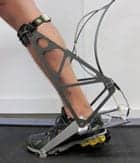A recent study conducted by the Rehabilitation Institute of Chicago (RIC) investigating a blend of brain stimulation with conventional occupational therapy (OT) intended to improve upper limb movement recovery, indicates that 80% of its participants regained arm and hand use.
In a news release, RIC notes that Richard L. Harvey, MD, medical director at the RIC Center for Stroke Rehabilitation and lead scientist of the study, researched and developed a new strategy to modulate brain healing and improve long-term arm and hand use in stroke survivors. According to the release, this type of brain stimulation is the only technology that has been shown to deliver greater functional improvements when combined with an OT session.
The release cites research indicating that typically about 50% of post-stroke patients regain full upper arm use through OT alone. The RIC study suggests that the blended treatment may increase this recovery to 80%.
To apply the noninvasive brain stimulation, known as navigated brain stimulation (NBS), to conventional stroke rehabilitation, RIC reportedly worked with Nexstim Corporation. Once a stroke has blocked blood to the brain, some regions of the impacted brain hemisphere become less active, while others on the healthy side of the brain become more active. The release states by externally stimulating the overly active parts of the health brain with NBS magnetic waves, these targeted areas calm down. The study’s results suggest that when the overly active healthy brain regions calm down, the stroke-damaged areas respond more fully and sustainably to occupational therapy. This in turn allows patients a better recovery and increased arm use, researchers say.
Harvey adds that the “results indicate that targeting stimulation to the correct area can set up the brain to learn and retain more during traditional stroke rehabilitation. We know that stroke is a leading cause of serious disability and costs the US more than $36 billion each year from lost work days and long-term health care. To these patients, regaining arm use and mobility means increasing their ability and, thus, their quality of life.”
According to the release, the Center for Stroke Rehabilitation at RIC integrates research directly into patient care and is a federally designated Rehabilitation Research and Training Center for Stroke, as recognized by the National Institute on Disability and Rehabilitation Research. Now that its pilot study is complete, RIC has expanded the study and currently manages 12 additional research centers in a nationwide study.
[Source: RIC]





